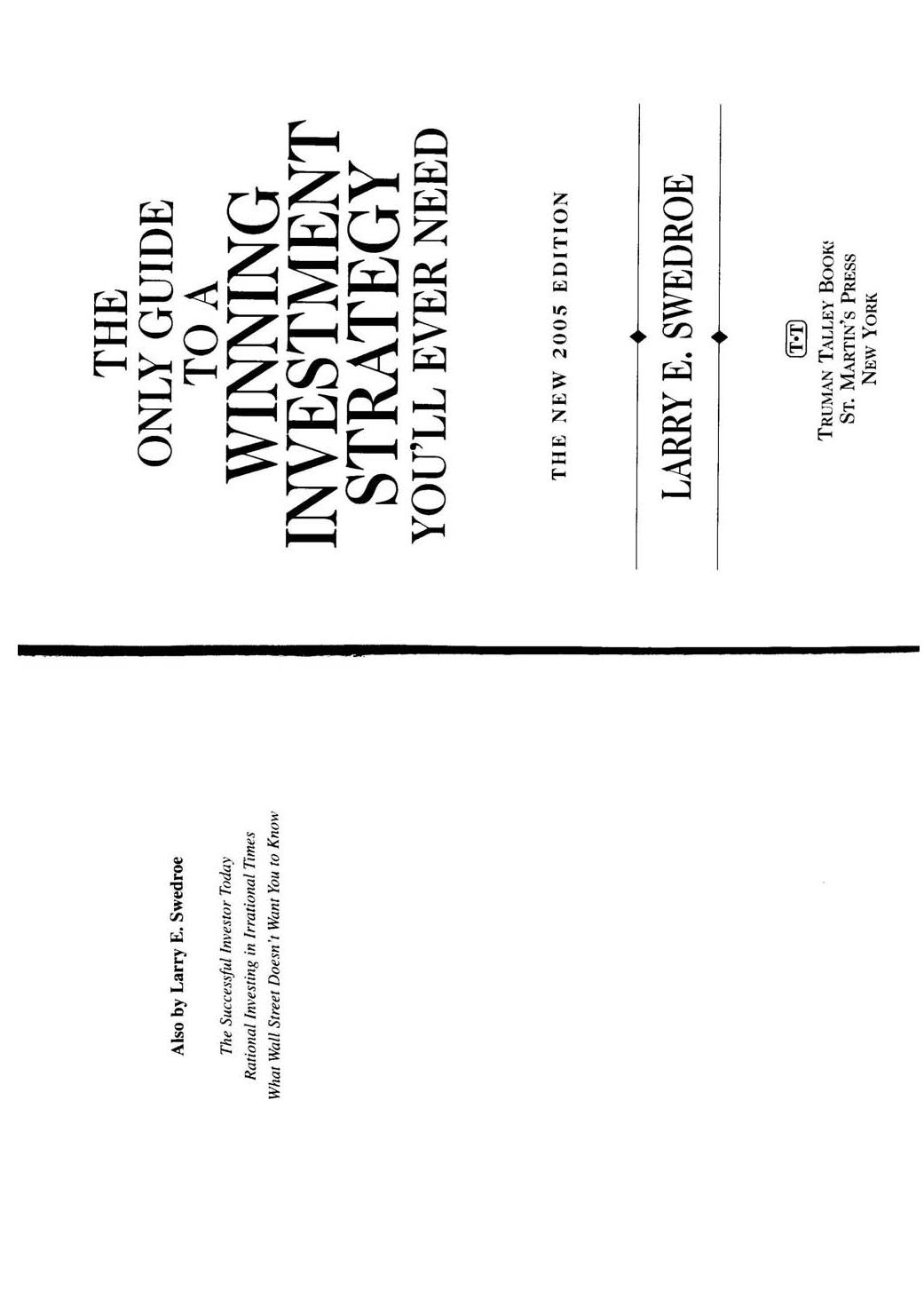The Only Guide to a Winning Investment Strategy You'll Ever Need: The Way Smart Money Invests Today by Larry E. Swedroe

Author:Larry E. Swedroe [Swedroe, Larry E.]
Language: eng
Format: epub, pdf
ISBN: 9780312339876
Amazon: 0312339879
Publisher: St. Martin's Press
Published: 2005-01-02T06:00:00+00:00
Diversification of Risk
There are two times in a manâs life when he should not speculate: when he canât afford it, and when he can.
âMark Twain, Following the Equator
Every investor is familiar with the saying, âDonât put all your eggs in one basket.â No matter how good an investment seems, few individuals would construct a portfolio that consists of just one asset. Even if one believes that the risk of being wrong is very small, the cost of being wrong is too great to make that big a bet. Conversely, even when the odds are stacked against them, as at the racetrack or in a lottery, individuals will make an âinvestmentâ if the cost of being wrong is small. This type of behavior demonstrates that investors are not risk neutral; in fact they are risk averse, and prudent investors spread their investment dollars across various investment alternatives. This process is called diversification of risk. We will now explore, using three easy steps, how one can most effectively use the principle of diversification to reduce risk.
Letâs begin with a portfolio that consists of only the stock of one company, General Motors. Despite the size and strength of the company, that would be a very risky, and potentially very volatile, portfolio. In order to reduce the risk of the portfolio, we need to diversify. We can do so by adding Ford, but this type of diversification is not very effective because both companies are susceptible to the same types of business risk. Since both are likely to respond to changes in the economic environment in a very similar manner, their stock prices are likely to move in a highly correlated manner. (If they moved in exact tandem, they would have a correlation of +1.) Not only are they likely to move up and down at the same time, but the size of their price movements are also likely to be similar (but not identical). While we slightly reduced the risk of our portfolio by adding a second security, we did not really accomplish our objective.
We can more effectively reduce the risk and the volatility of our portfolio by adding the stocks of companies from different industries, preferably ones that do not respond in exactly the same way to business cycles. If assets tend to do well or poorly at the same time, they have high correlation. If the opposite is true, then their correlation is lower, and it may even be negative. Ideally, we would like to find assets with negative correlation. The addition of assets that have perfect negative correlation could completely eliminate the volatility of the portfolio. Although assets that have negative correlation are very hard to find, risk can be reduced by including in a portfolio assets whose correlation is less than perfectâand the lower the better.
Even without any understanding of the math, I think you can accept that an investor would have reduced the risk of our sample portfolio by adding Merck (a drug company), Citigroup (a financial institution), or AT&T (a communication company) to the portfolio.
Download
The Only Guide to a Winning Investment Strategy You'll Ever Need: The Way Smart Money Invests Today by Larry E. Swedroe.pdf
This site does not store any files on its server. We only index and link to content provided by other sites. Please contact the content providers to delete copyright contents if any and email us, we'll remove relevant links or contents immediately.
Zero to IPO: Over $1 Trillion of Actionable Advice from the World's Most Successful Entrepreneurs by Frederic Kerrest(4068)
Machine Learning at Scale with H2O by Gregory Keys | David Whiting(3644)
Harry Potter and the Goblet Of Fire by J.K. Rowling(3612)
Never by Ken Follett(3535)
Ogilvy on Advertising by David Ogilvy(3340)
Shadow of Night by Deborah Harkness(3177)
The Man Who Died Twice by Richard Osman(2811)
Book of Life by Deborah Harkness(2723)
My Brilliant Friend by Elena Ferrante(2705)
How Proust Can Change Your Life by Alain De Botton(2616)
0041152001443424520 .pdf by Unknown(2599)
Will by Will Smith(2581)
The Tipping Point by Malcolm Gladwell(2563)
How to Pay Zero Taxes, 2018 by Jeff A. Schnepper(2503)
Purple Hibiscus by Chimamanda Ngozi Adichie(2494)
Hooked: A Dark, Contemporary Romance (Never After Series) by Emily McIntire(2424)
Rationality by Steven Pinker(2151)
Borders by unknow(2119)
Daughter of Smoke and Bone by Laini Taylor(2083)
